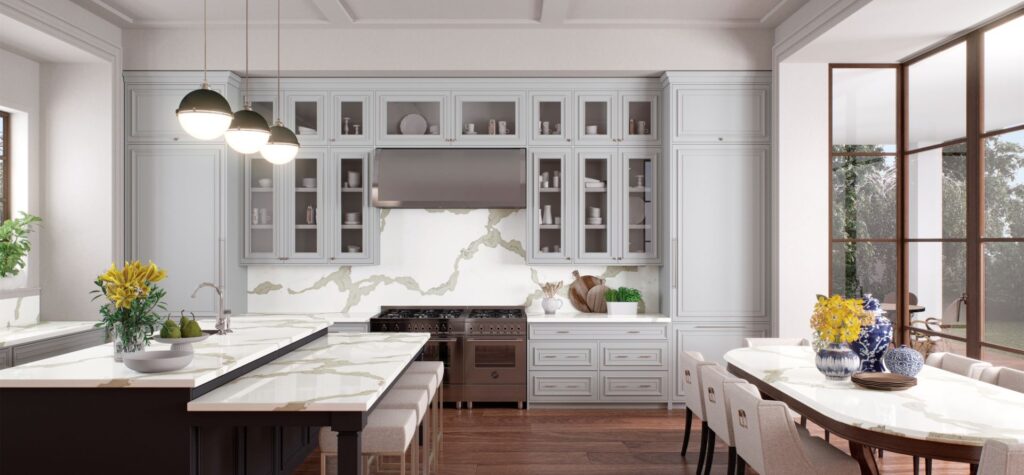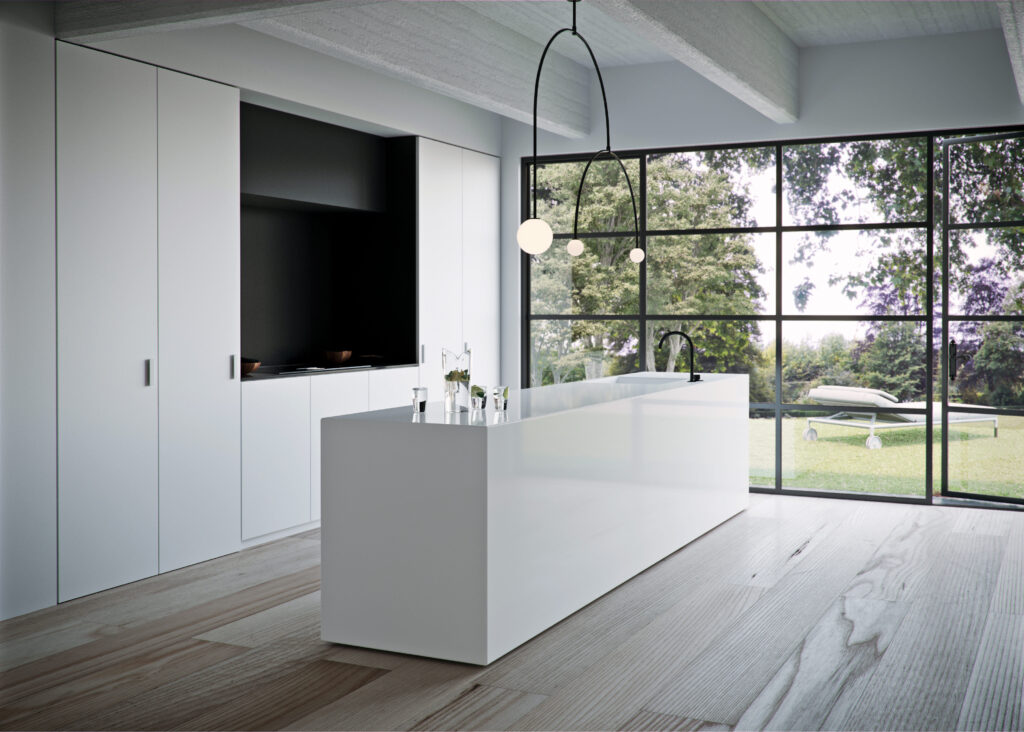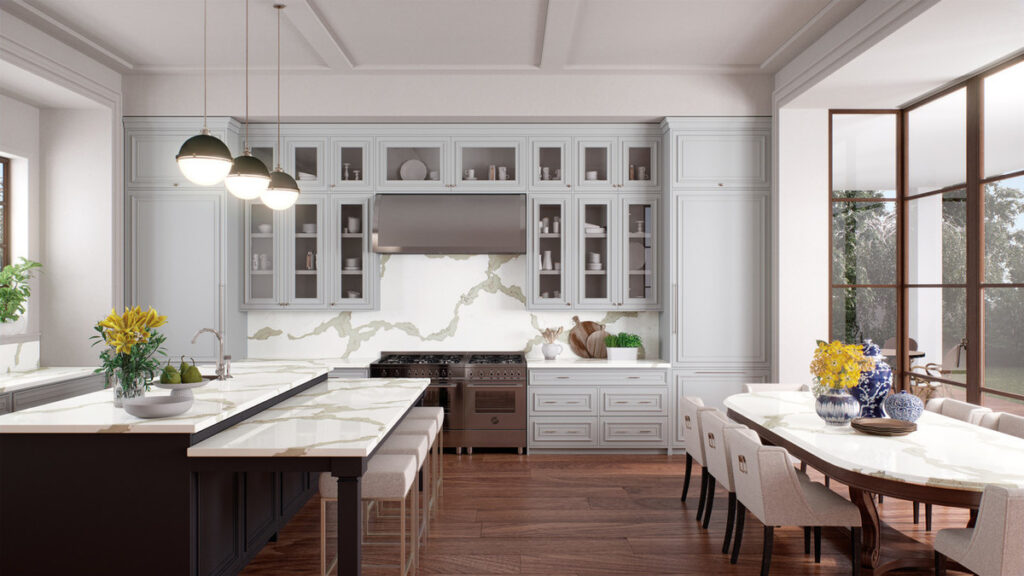How to Choose the Right Quartz Countertop Thickness
5 min read
Quartz is one of the best materials on the market for kitchen countertops. It is durable, consistent in quality, and comes in a variety of colours and patterns.
One of the many decisions involved in choosing a countertop is the thickness and there are many factors to consider.
Check out this article to learn more about quartz countertops and read on to get information about choosing the correct thickness for your new surface.

The Expert Opinion on Choosing Quartz Countertop Thickness
These are the factors that matter most when you are considering what thickness your counters should be. Everything from the slab size you will need to the location and use of the space can affect the ideal thickness of your countertop.
What is Available to You?
Quartz comes in two standard thicknesses. You will often be able to select between 2cm thick and 3cm thick. While it may be possible to find other thicknesses for custom jobs, this can add to the cost and complexity of your installation.
These two thicknesses are the most common for various counter styles and uses, and quartz is standardized when compared to naturally occurring materials.

Think About the Area
Location can affect what is available to you for installation. Some areas will have easy access to materials like quartz, while others might not. The availability of different thicknesses may vary by location as well.
Do not compromise on the thickness required for durability to secure the colour of quartz you want. You may actually save money by reaching out to a vendor that is farther away if they can get the right colour and thickness of quartz for your needs.
Where is the Counter Located?
This is likely the biggest factor when choosing countertop thickness. Quartz is suitable for use in the kitchen, bathrooms, bedrooms, for tabletops, and almost any other use that you can imagine. However, you should be aware of the requirements for each usage before you go shopping for quartz.
As a rule of thumb, counters in high usage areas like the kitchen will need to be thicker than those that are intended for a vanity or a smaller space that sees less traffic. A thicker kitchen counter is generally regarded as more attractive and is on trend for kitchen remodels in modern homes.
To install trim or a custom edge on your counter, you will also have to select a thicker counter. A thinner countertop will not offer enough support for this custom addition.
Budget
As with any remodel or new home project, many decisions come down to cost. If you have to install very large counters, or have many surfaces in your home, the costs can add up fast.
Thicker counters will always cost more than thinner ones. If you require several thick counters throughout your home, you will need to budget for that and only explore options that fit within that budget.
The length and width of a counter will come into play for the total cost. To budget properly, inquire about the price per installed foot rather than the generic costs that are listed for each material.
Lastly, make sure that you will be able to order all the quartz that you need for your project at the same time. While it may be possible to order from a smaller supplier and work on the counters in stages, it’s often much more cost-effective to order all the quartz that you need at once. This way, the installation crew will only need a day or two to install the counters.
Consider Your Styling
One of the other factors that many people do not consider is the heft and bulk of a thicker counter style. If you pick the thicker counters, you will likely need to budget for a backsplash as well to balance the space.
Sometimes a thicker counter will look out of place if it is not complemented with a backsplash behind it. Style details like a backsplash can seem small but can significantly add to the cost of your finished project and must be considered in the budget.
Be Practical
While it might be tempting to select a thinner counter than you really need for a kitchen or a bathroom, this is not often wise. You might prefer the way that a thinner counter looks, but if you pick the wrong thickness and it is not up to the tasks required of it, that could be bad news long-term.
An experience installer or project manager will be able to advise on the proper counter thickness for each planned use. Taking into account the advice of experts will ensure you have a positive experience with your new countertops.

Consider Your Finishes
From a straight edge to a waterfall edge to a bullnose or half-bullnose, there are many decorative styles to choose from.
Put some time into researching which edges match with which counter thicknesses. For some styles, you will not be able add a decorative edge due to the thickness of the counter itself.
In addition, some edge finish styles do not flatter certain counter thicknesses. It is always best to go to a design studio and look at how each finished edge will look before you make a final decision.
Consider Custom Sizes and Cuts
While Quartz can be cut into any shape or style, some thicknesses will not work as well as others for custom sizes. Additionally, you’ll need to consider which edges will work with a unique counter shape.
Do Your Research and Choose the Right Counter Thickness for Your Needs
As with any home project, always research before you buy. Armed with knowledge, selecting the right counters for your space will be a breeze.
A prepared and informed purchase is always much more satisfying than an impulse buy.
{{ subtitle }}
{{ i.desc }}
{{ subtitle }}
{{ subtitle }}